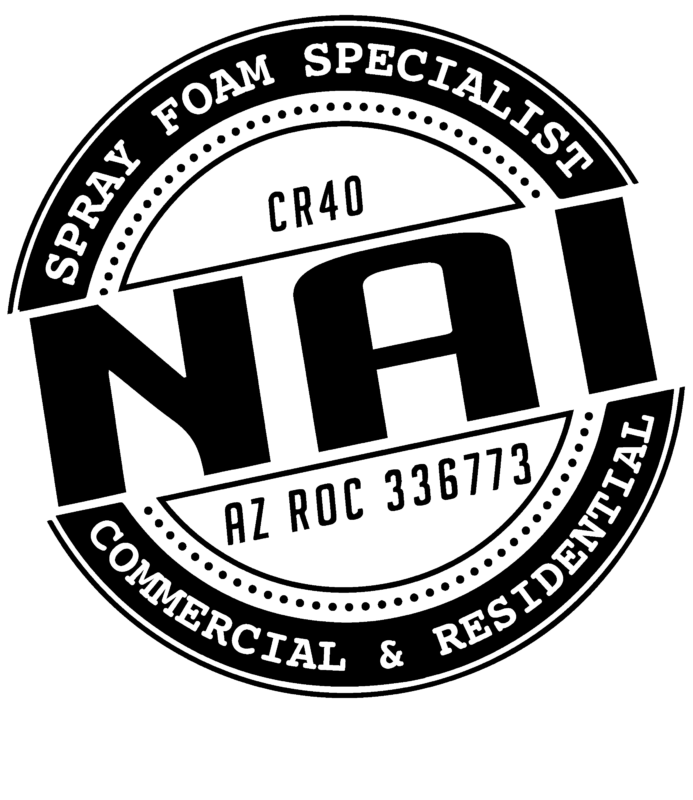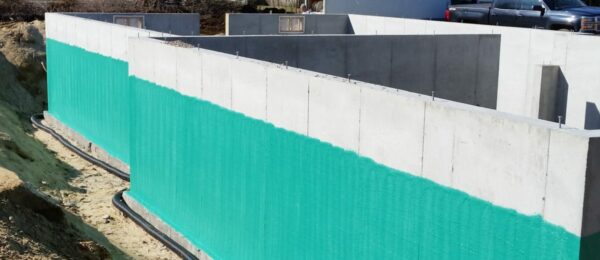Are you tired of those sky-high energy bills? If you live in Flagstaff, you’re not alone. With its unique climate, maintaining a comfortable home can be a challenge. But what if there was a way to keep your home cozy year-round while slashing your energy costs?
Welcome to Flagstaff’s ultimate energy efficiency guide featuring spray foam insulation. Here, we’ll explore everything you need to know about maximizing energy efficiency in your home using spray foam. By the end, you’ll have actionable tips and insights that can transform your living space and your budget.
Why Energy Efficiency Matters in Flagstaff
Flagstaff residents experience a wide range of temperatures throughout the year. From chilly winters to sweltering summers, maintaining a comfortable indoor environment can be costly. Energy efficiency isn’t just good for your wallet; it’s also beneficial for the environment. Reducing energy consumption helps lower greenhouse gas emissions and contributes to a more sustainable future. In Flagstaff, where natural beauty is a key asset, this is particularly important.
Understanding Insulation
What Is Insulation?
Insulation is a material that reduces the rate of heat transfer in and out of a building. It acts as a barrier, keeping hot air out during the summer and trapping warm air inside during the winter. There are various types of insulation, including fiberglass, cellulose, and spray foam, each with its own set of benefits and drawbacks.
Types of Insulation
Traditional insulation materials like fiberglass and cellulose have been around for decades. While they are effective to some extent, they may not offer the comprehensive benefits that modern insulation solutions can provide. Fiberglass is affordable but can be difficult to install properly. Cellulose is eco-friendly but may settle over time, reducing its effectiveness.
Why Spray Foam Stands Out
Spray foam insulation is a game-changer. Unlike other types of insulation, spray foam expands upon application, filling gaps and creating an airtight seal. This ensures that there are no leaks, which is crucial for maintaining energy efficiency. Spray foam is also highly durable and can last for many years without needing replacement.
The Science Behind Spray Foam Insulation
How Spray Foam Works
Spray foam insulation is made from two liquid components that combine to form a foam. This foam expands rapidly, filling cracks and crevices to form an airtight barrier. The result is superior thermal insulation and a significant reduction in air leakage.
Types of Spray Foam
There are two main types of spray foam insulation—open-cell and closed-cell. Open-cell spray foam is less dense and provides excellent soundproofing. Closed-cell spray foam is denser and offers higher R-values, making it more effective at thermal insulation. Both types have their own unique advantages, depending on your specific needs.
R-Value Explained
The R-value measures an insulation material’s resistance to heat flow. The higher the R-value, the better the material insulates. Spray foam typically has a higher R-value compared to traditional insulation, making it a more effective solution for energy efficiency.
Benefits of Spray Foam Insulation
Enhanced Energy Savings
Spray foam insulation can significantly reduce your energy bills by creating an airtight seal. This prevents conditioned air from escaping and unconditioned air from entering, reducing the workload on your HVAC system. Over time, these savings can add up, making spray foam a cost-effective investment.
Improved Indoor Air Quality
Traditional insulation materials can harbor mold, dust, and other allergens. Spray foam, on the other hand, creates a moisture barrier that helps prevent mold growth. This leads to improved indoor air quality, which is especially beneficial for those with allergies or respiratory issues.
Structural Strength and Durability
Spray foam insulation adds structural integrity to your home. The foam adheres to surfaces and hardens, providing additional support to walls and roofs. This makes your home more resilient to natural elements like wind and rain.
Steps to Install Spray Foam Insulation
Assessing Your Needs
Before installing spray foam insulation, it’s essential to assess your home’s specific needs. Identify areas where heat loss is most significant, such as attics, crawl spaces, and walls. A professional energy audit can provide valuable insights into where insulation will be most effective.
Choosing the Right Type
Based on your assessment, choose between open-cell and closed-cell spray foam. Consult with a professional installer to determine which type will best meet your needs and budget. Each type has its own set of benefits, so make sure to weigh your options carefully.
Professional Installation vs. DIY
While it might be tempting to tackle insulation as a DIY project, professional installation is highly recommended. Professionals have the expertise and equipment to ensure the job is done correctly. Improper installation can lead to gaps and inefficiencies, negating the benefits of spray foam.
Common Misconceptions About Spray Foam Insulation
It’s Too Expensive
While the upfront cost of spray foam insulation is higher compared to traditional materials, the long-term savings on energy bills can offset this initial investment. Additionally, many homeowners find that the added benefits, such as improved air quality and structural integrity, make it well worth the cost.
It’s Harmful to the Environment
Spray foam insulation is actually more environmentally friendly than you might think. By reducing energy consumption, it lowers your carbon footprint. Additionally, many modern formulations are made with eco-friendly materials and are free from harmful chemicals.
It’s Only for New Homes
Spray foam insulation is versatile and can be used in both new and existing homes. Retrofit projects can benefit just as much from spray foam as new constructions. Whether you’re building a new home or upgrading an existing one, spray foam is a viable option.
Spray Foam Maintenance Tips
Regular Inspections
While spray foam insulation is highly durable, it’s still essential to perform regular inspections. Check for any signs of damage or wear, especially after extreme weather conditions. Early detection of issues can prevent more significant problems down the line.
Addressing Minor Repairs
Minor damages can be easily fixed with touch-up applications. If you notice any cracks or gaps, address them promptly to maintain the insulation’s effectiveness. Professional services are available for more extensive repairs.
Long-Term Care
Maintaining optimal humidity levels in your home can extend the life of your spray foam insulation. Use dehumidifiers in damp areas and ensure proper ventilation. This will help prevent mold growth and keep your insulation in top condition.
How to Choose the Right Contractor
Credentials and Experience
When selecting a contractor for spray foam installation, look for credentials and experience. A reputable contractor will have certifications and a proven track record. Don’t hesitate to ask for references and check online reviews.
Detailed Quotes
Obtain detailed quotes from multiple contractors. The quote should include a breakdown of costs, the type of spray foam to be used, and the scope of work. Compare these quotes to ensure you’re getting the best value for your investment.
Warranty and Support
A reliable contractor will offer a warranty on their work. This provides peace of mind knowing that any issues will be addressed without additional costs. Make sure to clarify the terms of the warranty before proceeding with the installation.
Government Incentives and Rebates
Federal Tax Credits
The federal government offers tax credits for energy-efficient home improvements, including spray foam insulation. These credits can help offset the initial cost of installation. Check the IRS website for the latest information on eligibility and application procedures.
State and Local Programs
In addition to federal incentives, there are state and local programs available to Flagstaff residents. These programs may include rebates, low-interest loans, or grants for energy-efficient upgrades. Contact your local government or utility provider for more information.
Utility Company Rebates
Many utility companies offer rebates for energy-efficient home improvements. These rebates can further reduce the cost of spray foam installation. Check with your utility provider to see what programs are available in your area.
Environmental Benefits of Spray Foam
Reducing Carbon Footprint
By improving your home’s energy efficiency, spray foam insulation helps reduce your carbon footprint. Lower energy consumption means fewer greenhouse gas emissions, contributing to a healthier planet.
Sustainable Materials
Modern spray foam formulations often use sustainable materials and environmentally friendly blowing agents. This makes spray foam a more eco-conscious choice compared to traditional insulation materials.
Energy Conservation
Energy conservation is crucial for sustainability. Spray foam insulation helps conserve energy by reducing the need for heating and cooling. This not only saves money but also preserves natural resources.
Reach Out to NAI Spray Foam Today
Spray foam insulation offers numerous benefits for homeowners and businesses in Flagstaff. From energy savings to environmental friendliness, it is a wise investment that pays off in the long run. Remember to keep up with regular maintenance and choose a reputable contractor for installation.
If you’re interested in learning more about spray foam insulation or getting a quote for your home or business, don’t hesitate to reach out to NAI Spray Foam today. With our expertise and quality products, we can help make your property more comfortable, energy-efficient, and environmentally friendly.

